| Ellida | |
|---|---|
 | |
| Ellida Caniplaga | |
| Scientific classification | |
| Kingdom: | |
| Phylum: | |
| Class: | |
| Order: | |
| Family: | |
| Subfamily: | |
| Genus: | Ellida Grote, 1876 |
Ellida is a genus of moths of the family Notodontidae erected by Augustus Radcliffe Grote in 1876. [1]
| Ellida | |
|---|---|
 | |
| Ellida Caniplaga | |
| Scientific classification | |
| Kingdom: | |
| Phylum: | |
| Class: | |
| Order: | |
| Family: | |
| Subfamily: | |
| Genus: | Ellida Grote, 1876 |
Ellida is a genus of moths of the family Notodontidae erected by Augustus Radcliffe Grote in 1876. [1]

George Grote was an English political radical and classical historian. He is now best known for his major work, the voluminous History of Greece.

Noctuoidea is the superfamily of noctuid or "owlet" moths, and has more than 70,000 described species, the largest number of for any Lepidopteran superfamily. Its classification has not yet reached a satisfactory or stable state. Since the end of the 20th century, increasing availability of molecular phylogenetic data for this hugely successful radiation has led to several competing proposals for a taxonomic arrangement that correctly represents the relationships between the major lineages.

Augustus Radcliffe Grote was a British entomologist who described over 1,000 species of butterflies and moths. He is best known for his work on North American Noctuidae. A number of species were named after him, including the moth Horama grotei.
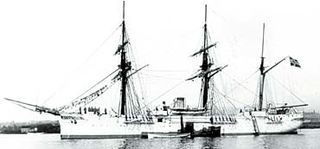
HNoMS Ellida was a 1. class gunboat built for the Royal Norwegian Navy. Like the other Norwegian gunships of her era, she carried a reasonable heavy armament on a diminutive hull. A distinct feature of Ellida was that her funnel could be raised and lowered as needed. The vessel was built at the Naval Yard at Horten, and had yard number 59.
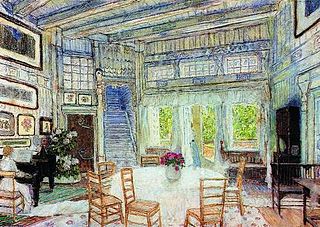
The Lady from the Sea is a play written in 1888 by Norwegian playwright Henrik Ibsen inspired by the ballad Agnete og Havmanden. The drama is notable in the Ibsen corpus for introducing the portrayal of Hilde Wangel who is again portrayed in Ibsen's later play The Master Builder. The character portrayal of Hilde Wangel has been portrayed twice in contemporary film as a culturally relevant portrayal, most recently in the 2014 film titled A Master Builder.
John Grote was an English moral philosopher and Anglican clergyman.

Acronicta is a genus of noctuid moths containing about 150 species distributed mainly in the temperate Holarctic, with some in adjacent subtropical regions. The genus was erected by Carl Linnaeus in his 1758 10th edition of Systema Naturae. Caterpillars of most Acronicta species are unmistakable, with brightly colored hairy spikes, and often feed quite visibly on common foliate trees. The hairy spikes may contain poison, which cause itchy, painful, swollen rash in humans on contact. The larva of the smeared dagger moth is unusually hairy even for this genus. Acronicta species are generally known as dagger moths, as most have one or more black dagger-shaped markings on their forewing uppersides. But some species have a conspicuous dark ring marking instead.

Abagrotis is a genus of moths of the family Noctuidae.

Euxoa is a genus of moths of the family Noctuidae raised by the German entomologist, Jacob Hübner.
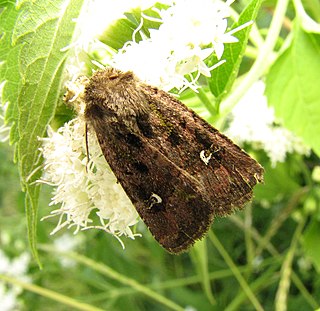
Lacinipolia is a moth genus in the family Noctuidae.
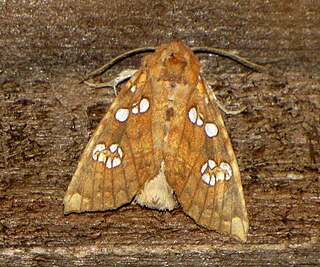
Papaipema is a genus of moths of the family Noctuidae. The genus was erected by John B. Smith in 1899.
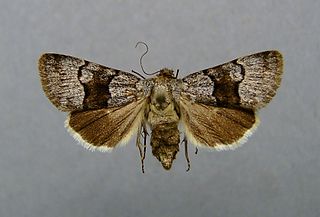
Sympistis is a genus of moths of the family Noctuidae. The genus was erected by Jacob Hübner in 1823.

Digrammia was a genus of moths in the family Geometridae erected by Carl Freiherr von Gumppenberg in 1887. It is now often considered a synonym of Semiothisa.

Catocala mira, the wonderful underwing, is a moth of the family Erebidae. The species was first described by Augustus Radcliffe Grote in 1876. It is found in North America from Manitoba through southern Ontario and Quebec through New Hampshire and Connecticut to Florida, west to Texas and north through Iowa and Illinois.
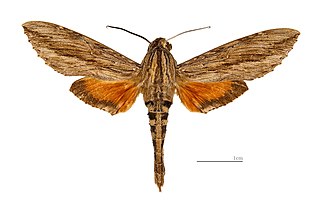
Dilophonotini is a tribe of moths of the family Sphingidae described by Hermann Burmeister in 1878.
HNoMS Ellida may refer to one of the following Royal Norwegian Navy ships:
Andropolia olorina is a moth in the family Noctuidae first described by Augustus Radcliffe Grote in 1876. It is found in California and Nevada.
The Grote Chair of the Philosophy of Mind and Logic is an endowed chair at University College London's Department of Philosophy.